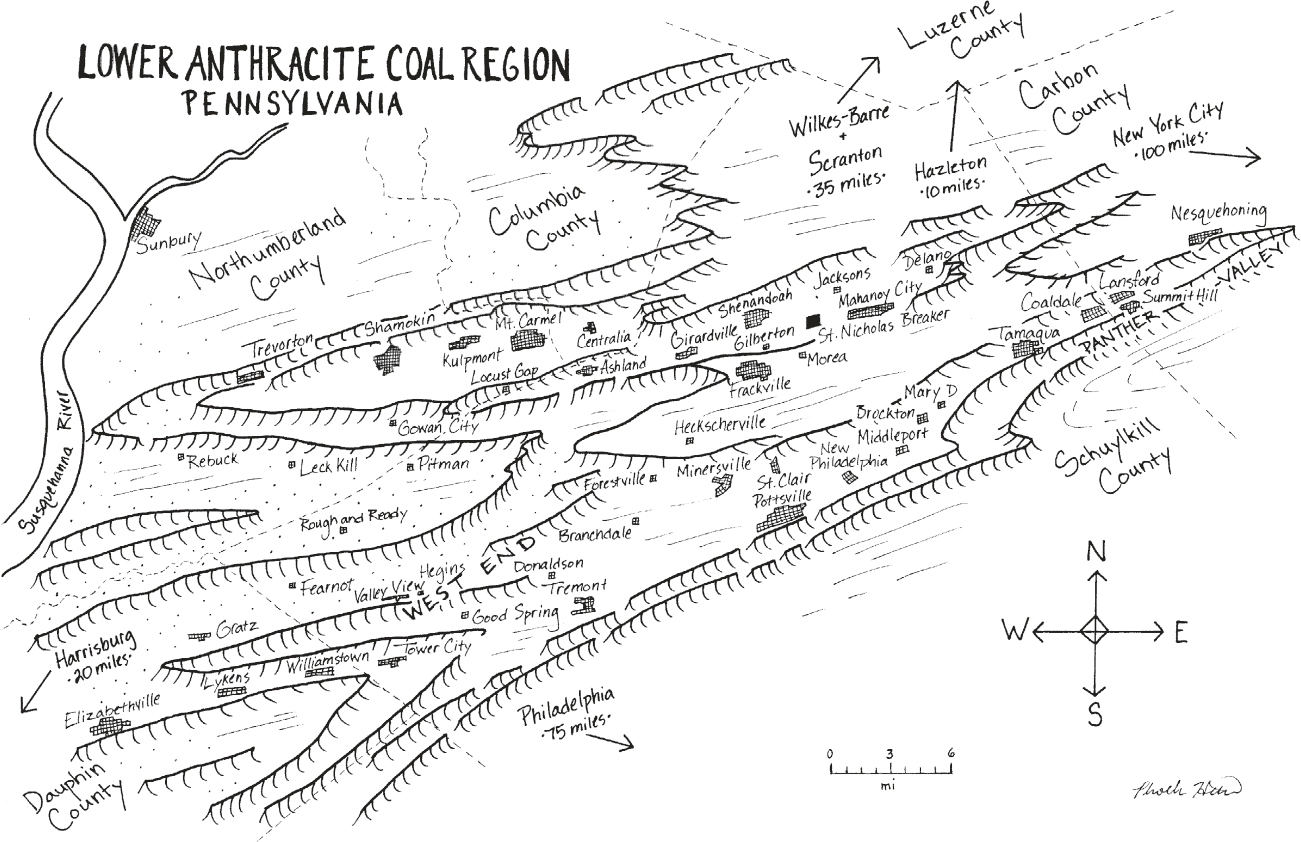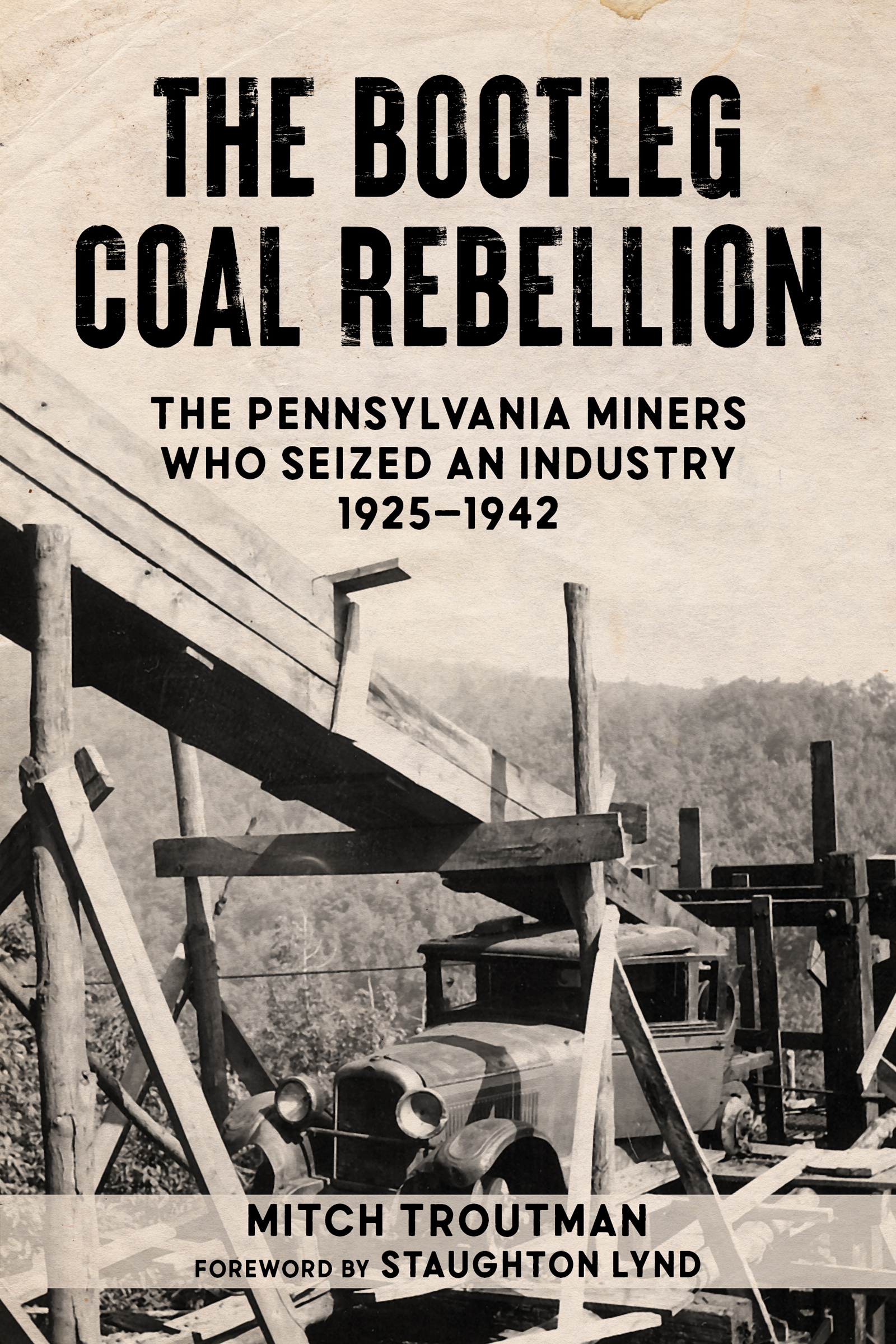Contents
List of Figures
Guide
Pagebreaks of the print version
Mitch Troutman is a gifted storyteller. Combining rich imagery and down-to-earth writing with prudent historical research, he shows us what working-class people are capable of when companies push them to the brink of starvation. What the bootleggers endured and accomplished is extraordinary. Youd be hardpressed to find a better tale of democratic rebellion anywhere, particularly one with so many lessons for today. Modernday coal barons beware: this book will turn readers into renegades.
Jamie Longazel, author of Undocumented Fears: Immigration and the Politics of Divide and Conquer in Hazleton, Pennsylvania
Using local newspapers and oral history interviews, gifted historian Mitch Troutman tells the story of the miners, as well as the women, children, storekeepers, truckers, and priests, who participated in the bootleg coal rebellion. Great read!
Karol Kovalovich Weaver, author of Medical Caregiving and Identity in Pennsylvanias Anthracite Region, 18802000
The most detailed account we have of coal bootlegging in the Anthracite Region of Pennsylvania in the Depression decade. It shows how unemployed miners took over unused mines, asserting and defending a right to mine and market the coal to support their families. Local government, the courts, and whole communities supported their efforts, writing a remarkable chapter in American labor history. We are in debt to Mitch Troutman for telling this remarkable story.
Thomas Dublin, Distinguished Professor Emeritus, State University of New York at Binghamton, and author of The Face of Decline: The Pennsylvania Anthracite Region in the Twentieth Century
It is not a new discovery that bootleg coal was widely mined in Pennsylvania coalfields during the Depression. However, Mitchell Troutmans wide-ranging research enables him to tell the story with great immediacy, at times almost person by person. We learn how dangerous this improvised mining could be when we are told in detail how often inexperienced young men (and a few women) went forth to scrape what was left off old shafts or seek to open up new veins of coal without being able to properly support the roof under which they dug. We watch as every member of the family of unemployed miners has a task capable of performance at their age in the improvised production process.
Staughton and Alice Lynd
The Bootleg Coal Rebellion
The Pennsylvania Miners WhoSeized an Industry19251942
Mitch Troutman

The Bootleg Coal Rebellion: The Pennsylvania Miners Who Seized an Industry, 19251942
Mitch Troutman
This edition 2022 PM Press.
All rights reserved. No part of this book may be transmitted by any means without permission in writing from the publisher.
ISBN: 9781629639338 (paperback)
ISBN: 9781629639475 (ebook)
LCCN: 2021945066
Cover by John Yates / www.stealworks.com
Interior design by briandesign
10 9 8 7 6 5 4 3 2 1
PM Press
PO Box 23912
Oakland, CA 94623
www.pmpress.org
Printed in the USA
Contents
This book is dedicated to the bootleggers of the Depression, including my great-grandfathers. It is also dedicated to Michael Kozura, David A. Lucas (King of the Bootleggers), and the independents still carrying on the tradition today.
Things happen in the bootleg coal region that are almost unbelievable for anyone not familiar with the whole story. Without their background they sound utterly preposterous. Theyve probably never happened anywhere before. They couldnt happen except in such a region and in such a set of circumstances.
New York Times, 1935
We dont know and we dont care whos supposed to own the land. God put that coal therenot the Philadelphia and Reading Coal Company.
Mike McCloskey, miner
Workers Representatives Are Placed in Both State and National Capitals, New York Times, December 1, 1935.
Cited in Oliver Carlson, Bootlegging Coal: A New Industry Appears on the Horizon, Harpers Monthly, April 1935.

Figure 0.1: Map of the Anthracite Coal Region, circa 1930, by Phoebe R. Heath
Glossary
anthracite: the highest grade of coal, with a carbon content of 86 to 98 percent. It burns with no smoke and is used industrially and for home heat. Also called hard coal.
benevolent association: mutual aid organizations that provide sickness and death benefits. Predecessor to both unions and insurance companies.
bituminous: coal with a carbon content of 45 to 86 percent. It is used in industrial applications or made into coke. Also called soft coal.
blacklist (verb): to ban from employment in an industry by sharing fired workers name with other employers.
boosterism: the act of promoting a town or organization, often with exaggeration or half-truths, with the goal of improving public opinion.
breaker: a processing plant that crushes mine-run coal and sorts it into standardized sizes.
buggy: nickname for a miners cart or bucket.
cartel: an alliance formed by rival businesses to exert monopoly control over an industry or region.
checkoff: the automatic deduction of union dues from workers paychecks, as opposed to voluntary dues payment.
Civilian Conservation Corps (CCC): a New Deal employment program in which young men lived in camps and developed natural resources, such as reseeding forests, building roads and dams, and fire prevention.
Coal & Iron Police: industrial police who had the power of the state but were employed by private companies. Also called Coal & Irons.
coal hole: a bootleg mine.
Coal Region: refers specifically to the Anthracite Coal Region in Central and Northeast Pennsylvania.
coke: a solid fuel made by heating off the impurities of coal, in a process similar to making charcoal. Primarily used in iron and steel production.
colliery: an anthracite coal mine and associated buildings.
culm, culm bank: a waste product of coal mining and processing that is a mix of coal, coal dust, and rock. Its stored in giant piles. Other mining regions call it slack, boney, gob, and tailings.
damp (blackdamp, etc.): poisonous and/or explosive gasses released in underground anthracite mines.
drift mine: underground mine with a horizontal entrance and main gangway.
eminent domain: the governments right to seize private property in the name of the public good that just as often is used for the sake of large companies.
equalization (of working time): the principle of spreading the working time among all employees when there is not enough work, rather than employing some full time and laying off the rest. A demand of most anthracite miners that was furiously resisted by both the coal companies and the UMW.





